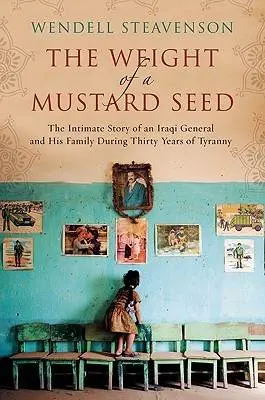Yet another impression now by Harward Business Review HBR.(see a report of the survey below). All good, only one thing to add.
Ravana himself was a very learned scholar and a great leader in his own domain, much-loved and respected. His only fault was the abduction of Sita. Vibhushana described him as: “An adharmi, a killer, a liar, a lustful person who cast his eyes on the wives of other men.” This made him a despised king. His defeat came about through effective intelligence and use of collaborators. The only way Ram could have defeated Ravana was by mastering that ability which HBR calls EI (emotional intelligence). This is contained in the Adithyahridayam ( a sloka, or mantra that invokes the sun god). This was taught to Ram by the Sage Agasthya before the former went across to battle with Ravana.
One of the keywords in this recitation which I like is ‘sarva shathru vinashnam’. (let all enemies be destroyed). Definition of shathru in the context of sarva, means anything that is against you, in any dimension. This also includes negative and bad thoughts and thus promoting EI.
You cannot achieve everything by yourself, it needs everyone’s efforts to get to the goal. While Ram is personified as the ideal man (later actually disproved by the rejection of Sita), the battle could not have been won without the others, significantly the efforts of Sugriva and Hanuman. This knowledge of incorporating all, came from Ram’s willingness to learn.
Leaders have to train themselves to succeed.
I know of the Ramayana, through books written in English (Sir CR Rajagopalacharya’s) and versions narrated to me by my elders in Telegu. Later came BR Chopra’s Ramayana. The most interesting interpretation of Ramayana I got from the one written by Kamala Subramanyam. It personifies not glorifies Ravana.
Even bandits have leaders and EI!
————————————————————————————————-
When the Harvard Business Review (HBR) came out with a survey of 188 MNCs worldwide, in one of its recent editions, on personal capabilities that contribute in the making of a successful leader, I could not help but go back 12,000 years in time to the age of the Ramayana. You might find it rather queer; after all what connection could an article in HBR have with a mythological epic? Before I begin to put that in context, let me state what the aforementioned survey, conducted by Goldman, found.
It said that leaders by their very nature are of six types:
Coercive — meaning ones who compel team members to follow their decisions
Authoritative — the ‘come with me’ type
Affiliating—ones who work through close association
Democratic — those who believe in building consensus
Pace-setting — the ‘I will jump and you will follow’ type
Coaching — the ones who believe in mentoring
The survey found out that with regards to the faculties that go towards making a successful leader, there are three primary ones: Technical skills, cognitive and analytical skills, and emotional intelligence (EI). In their interactions with hundreds of leaders worldwide, the surveyors found EI to be twice as important as the other two attributes. In fact, the importance of EI, which is an embodiment of motivation, empathy, and social skills, increases as one goes up the management chain. It is in this importance of EI that I recognize a similarity with Ramayana. And how!
In the mythical Ramayana, the battle leading to the climax was being played out. Would the exiled Rama edge out the evil Ravana, rescue his wife Sita whom the latter had abducted, and return home to reclaim kingship, or would he face defeat at the hands of Ravana’s massive army?
Rama’s motley group of men and monkeys were no match for the evil Ravana’s forces and weaponry. Or so thought Vibhishan, Ravana’s brother who had defected to Rama’s side. Unable to contain his concerns, he questioned Rama: How will you defeat this huge army with your limited resources? The reply that Rama gave stands out as a great lesson in leadership, more on the role and importance of EI as one can ever come across.
As a charioteer, he told Vibhishan who listened with rapt attention; you have to make sure you have a clear vision, and a cause worth fighting for. In the case of Ramayana, the cause was to rescue his beloved Sita and the vision was to defeat the evil forces.
Many prominent industry leaders today opine that you need not necessarily have a vision; rather, taking one step at a time could be much more practical way of going about, but I think that unless you have a vision, you will never be able to follow a trajectory. In the words of the great Mohandas Karamchand Gandhi, “the world steps aside to a person who knows where he or she is going.” In that parlance, unless you know where you are going, how will the world step aside and aid you in your pursuit?
Coming back to the battlefield of Ramayana, Rama narrated to Vibhishan, that the four wheels of the chariot are character, courage, ethics, and valor. Character is the most fundamental thing for a leader. As a leader, you must know who you are and what you stand for and communicate the same to your people through actions rather than words. It is essential for a leader to walk the talk; leadership doesn’t come from a business card, nor does respect. It is the ethics, the value system you embody that does the needful. Courage in this scenario would be the ability to take unpopular decisions, while valor is the courage to defend those very decisions. In the event of an unpopular decision, and such decisions are a part and parcel of a leader’s life since leadership begins where logic ends, it surely gets lonely out there, but you show the valor, walk the talk and your teammates are sure to follow you.
Rama continued to enumerate what the horses drawing the chariot stood for. They are, he said with gusto, strength, energy, and passion. In a battle, you must have the strength to discriminate between the right and wrong, and the zeal and perseverance to keep working towards your goal.
The four reins of a horse, he went on to say, are forgiveness, compassion, consistency, and equanimity. It is essential to touch the hearts before you ask for the hand. Touching heart needs compassion and forgiveness. Consistency and equanimity are hallmark of character which creates trust with the followers.
The chariot’s wheels, the horses, and their reins are among the most important of a warrior’s (and therefore a leader’s) repertoire: The weaponry: knowledge, strategy, intelligence, skills, commitment, and a restraint of ego—these are the weapons that will help us win this mammoth battle, proclaimed Rama to his army and Vibhishan before leading them into the epic struggle. “Arm yourself with these and no war will be lost,” he told them. After a spirited battle, his army—the motley group of men and monkeys defeated the heavily equipped Ravana and his forces.
The way the Ramayana portrays the essential attributes of a leader is a revelation. Many of today’s thinkers analyze too much and thus lose the charm of simplicity. You need not analyze and complicate things; what the HBR and the statement of Rama in the Ramayana say are one and the same; that EI, an embodiment of all these things mentioned above, is what makes victory possible against any opposition.
You might wonder as to how one person can possess all these qualities. Well, one need not master all of them. No great leader has been exceptional in all of them. They, like each one of us, were strong in a few of the attributes mentioned above, which provided core strength to their leadership.
You need to be consistent in your approach to different people, no matter who they are and where they are coming from. Leadership calls for consistency, one of the reins of the horse, as the Ramayana so beautifully enumerates. Keep the words of the charioteer in mind and results are sure to follow. As leaders, you might be doing 200 things, from inspiring to coaching to strategizing but nothing will be accounted for if you don’t produce results. And the best way to produce results, my friends, is the ability to motivate yourself and inspire your team to achieve your goal. That’s what leadership, as well as the essence of Rama’s words, is all about.






